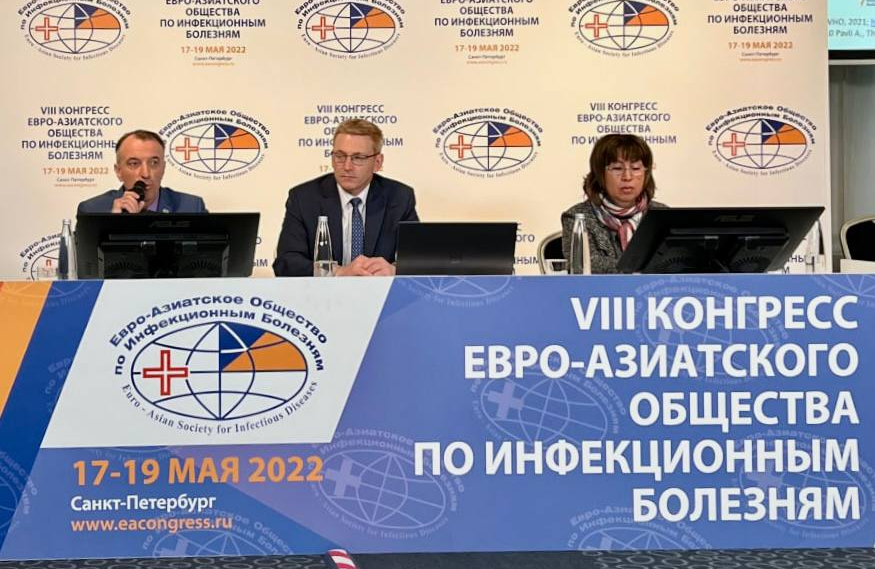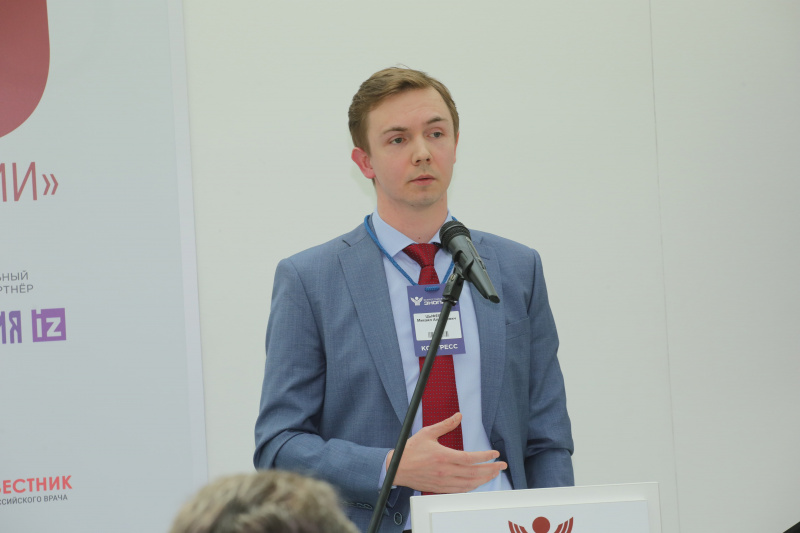
Influenza and COVID mixed infection may become a new challenge for public healthcare system in the upcoming epidemiological season

By autumn, the activity of influenza virus circulation will increase, and the risk of the emergence of new COVID pathogen variations will remain, so healthcare professionals urge to be ready for a new disease incidence. At the same time, the COVID-19 and influenza combination are fraught with a severe course of infection and a high death risk for vulnerable patient groups. This is evidenced by the observation results announced at the congress of the Euro-Asian Society for Infectious Diseases in St. Petersburg.
Since the beginning of 2020, death probability among patients with co-infection is almost 2.5 times higher than among patients with only COVID-19, and almost 10 times higher than among patients with influenza infection. This information was announced by Dmitry Lioznov, professor, head of infectious diseases and epidemiology department of St. Petersburg Medical University, based on data from British doctors.
To minimize the risks of co-infection and the severity of the disease, health professionals insist on seasonal influenza vaccination which is a non-specific "training" of the immune system, stimulating the immune response and forming a strong defense against various pathogens.
In favor of this, the experts cited statistics from Italy where was a large number of confirmed COVID-19 cases noted with a high mortality rate at the beginning of the epidemic, and compared the vaccination coverage of the most vulnerable patient groups with influenza - people over 65 years old, in different regions of the country. It turned out that in the regions where more than 60% of the population are vaccinated against influenza, COVID-19 mortality in the elderly was the lowest - about 5% only.
In Russia, the situation with immunization against influenza is considered favorable due to the presence of its own manufacture of high-tech and effective vaccine formulations.
Mikhail Kostinov, head of laboratory of vaccine prevention and immunotherapy of allergic diseases of the Scientific Research Institute of Vaccines and Serums named after I.I. Mechnikov, supported adjuvant vaccines. According to professor, such vaccines have clear advantages, they activate cellular mechanisms, form specific immunity, and increase the body's resistance to pathogens.
Professor M. Kostinov connected the risk of lethal outcomes with the patient age category. The older the person, the higher the death risk. The thing is that in older people a functional activity of immune cell decrease is observed. Immunization helps not only to reduce the risk of death, but also to reduce the infection severity.
In addition to the influenza, the speakers also paid attention to another disease - community-acquired pneumonia, which can be caused not only by COVID, but also by several other infectious agents. The goal of pneumonia therapy is to stop the infectious and inflammatory process, as well as to prevent severe forms of the disease. Elena Esaulenko, Doctor of Medical Science, professor, Head of the adult infectious diseases and epidemiology department of St. Petersburg State Pediatric Medical University, shared the results of a study in which Polyoxidonium® was used in a category of patients hospitalized with a community-acquired pneumonia.
According to Elena Esaulenko, the inclusion of the drug in therapy resulted in a decrease in the inflammation and intoxication degree in patients early on the third day after the onset of disease. In addition, the group that used drug demonstrated much fewer complications of the underlying disease, and hospitalization duration was significantly shorter. Most importantly, the number of people who required treatment in the ICU was also much lower in the Polyoxidonium group[2].
Oleg Maltsev, deputy head of the Clinic of Infectious Diseases department of the Kirov Military Medical Academy, candidate of medical science, drew attention to the problem of post-COVID syndrome which a large number of recovered COVID-19 patients faced, and shared the study results on the Azoximer bromide effect on the severity and duration of clinical manifestations in such patients. The study enrolled 90 people including those 55 ones who took the drug for 10 days [3].
1 Efimov SV, Matsiyeuskaya NV, Boytsova OV, Akhieva LY, Kuntsevich EV, Troshina AA, Kvasova EI, Tikhonov AA, Khomyakova NF, Harrison F, Rossi JF, Hardman TC. Open-label use of an aliphatic polyamine immunomodulator in patients hospitalized with COVID-19. Drugs Context. 2022;11:2022-1-1.
2
3 Efimov, Sergey V, Natallia V Matsiyeuskaya, Olga V Boytsova, Luydmila Yu Akhieva, Elena V Kuntsevich, Anastasia A Troshina, Elena I Kvasova "Open-label use of an aliphatic polyamine immunomodulator in patients hospitalized with COVID-19". Drugs in Context 11 (3 март 2022 г.): 1–15. .
Petrovax announced import substitution plans of a medicine for the orphan disease treatment


